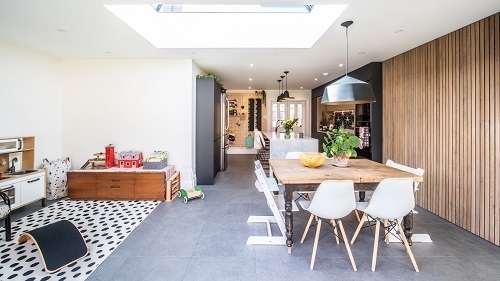
How to Building an Energy-Efficient Home Extension
Introduction
Building an energy-efficient home extension is not only a smart decision for the environment but also a wise investment for your future. It combines the benefits of increasing your living space while reducing energy consumption. In this Blog, Dobuild will explore the essential steps to create an energy-efficient home extension that will save you money and contribute to a greener planet.
Planning Your Energy-Efficient Home Extension
Setting Clear Goals
Before laying the foundation, define your goals for the extension. Consider factors like the purpose of the space, the number of rooms, and the specific features you want to include. Clear goals will guide your project and help you stay on budget.
Budgeting and Financing
Determine your budget early in the planning phase. Energy-efficient upgrades can have an initial cost, but they often pay for themselves through reduced energy bills. Explore financing options and incentives available for energy-efficient construction.
Choosing the Right Location
The extension’s location can significantly impact its energy efficiency. Consider aspects like solar orientation and natural shading to maximize passive heating and cooling opportunities.
Designing for Energy Efficiency
Optimal Insulation
Proper insulation is the cornerstone of an energy-efficient home extension. Use high-quality insulation materials to prevent heat loss in the winter and heat gain in the summer.
Efficient Windows and Doors
Invest in energy-efficient windows and doors to minimize heat transfer. Double-glazed windows with low-E coatings can keep your space comfortable year-round.
Sustainable Building Materials
Choose eco-friendly construction materials. These materials are not only better for the environment but can also enhance the energy efficiency of your home extension.
Heating and Cooling Solutions
Heat Pumps and Solar Heating
Consider using heat pumps or solar heating systems. They provide efficient heating and cooling, reducing the reliance on traditional heating and cooling methods.
Zoning and Thermostats
Implement zoning systems and smart thermostats. They allow you to control the temperature in different areas of your extension, ensuring comfort and energy savings.
Ventilation and Air Circulation
Proper ventilation and air circulation can help maintain indoor air quality and temperature. Invest in energy-efficient ventilation systems.
Lighting and Electrical Efficiency
LED Lighting
Use LED lighting throughout your extension. LEDs are energy-efficient and last longer than traditional bulbs.
Smart Home Systems
Incorporate smart home systems to automate and control your energy usage. This includes smart lighting, thermostat control, and appliance management.
Appliance Selection
Choose energy-efficient appliances. Look for the Energy Star label, which indicates that the appliance meets specific energy efficiency guidelines.
Water Conservation
Low-Flow Fixtures
Install low-flow fixtures in the bathrooms and kitchen to reduce water consumption.
Rainwater Harvesting
Consider rainwater harvesting for outdoor use. It’s an excellent way to conserve water for landscaping.
Greywater Recycling
Implement greywater recycling systems to reuse water from showers and sinks for irrigation.
Landscaping and Green Spaces
Eco-Friendly Gardens
Create eco-friendly gardens with native plants. These require less water and maintenance.
Permeable Surfaces
Use permeable surfaces in your landscaping to allow rainwater to penetrate the soil rather than run off.
Shade and Natural Cooling
Plant trees strategically to provide shade and natural cooling, reducing the need for air conditioning.
Monitoring and Maintenance
Energy Audits
Periodic energy audits will help you identify areas for improvement and ensure that your extension remains energy-efficient.
Regular Inspections
Regular inspections can catch issues early, preventing energy waste and costly repairs.
Seasonal Adjustments
Make seasonal adjustments to your home extension’s systems. For example, tune your thermostat settings for optimal efficiency during different seasons.
Conclusion
Building an energy-efficient home extension with Dobuild is a rewarding journey. Not only will it provide you with extra living space, but it will also reduce your carbon footprint and save you money on energy bills. With the right planning, design, and technology, Dobuild you can create a sustainable and comfortable extension for your home.




